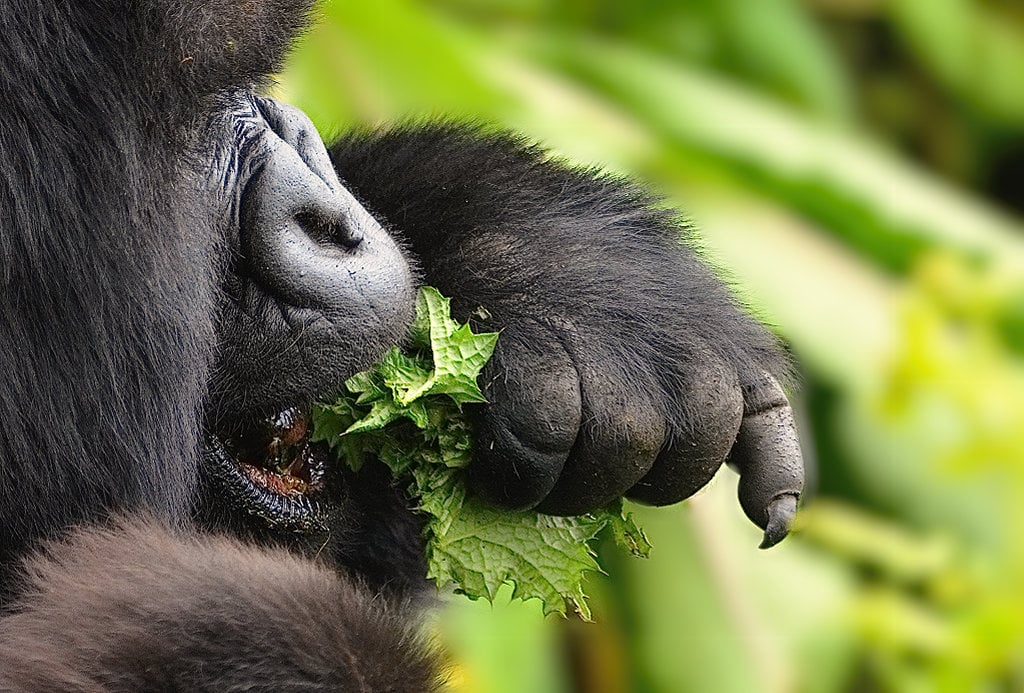Hey there, fellow fact enthusiasts! Welcome to Facts Vibes. In this article, we’re diving into the incredible world of gorillas. From their impressive strength to their complex social structures, get ready to be amazed by 25 fascinating facts about gorillas. Let’s embark on this wild adventure together!
Discovering the Fascinating World of Gorillas: 25 Intriguing Facts
Discovering the Fascinating World of Gorillas: 25 Intriguing Facts
1. Gorillas are the largest primates, with males reaching up to 6 feet tall and weighing up to 400 pounds.
2. There are two species of gorillas: the eastern gorilla and the western gorilla.
3. Gorillas are herbivores and primarily eat fruits, leaves, and shoots.
4. They live in groups called troops, which typically consist of one dominant silverback and several females and their offspring.
5. Silverbacks are the leaders of the troop and are responsible for protecting the group from threats.
6. Gorillas are highly intelligent animals and have been observed using tools in the wild.
7. They communicate through a combination of vocalizations, gestures, and facial expressions.
8. Gorillas have a close genetic resemblance to humans, sharing about 98% of their DNA with humans.
9. They are found in the dense forests of central Africa, where they are well adapted to their environment.
10. Gorillas are critically endangered due to poaching, habitat loss, and human encroachment.
11. Conservation efforts are underway to protect gorilla habitats and prevent further decline in their population.
12. Gorillas have complex social structures and form strong bonds within their troops.
13. They are predominantly diurnal animals, being most active during the day and resting at night.
14. Gorillas are known for their distinctive behavior, including chest-beating displays and vocalizations.
15. Female gorillas give birth to a single offspring every four to six years.
16. The infants are dependent on their mothers for several years, learning essential skills for survival.
17. Gorillas are highly adaptable animals and can thrive in a variety of forest habitats.
18. They play a crucial role in maintaining the ecological balance of their ecosystems.
19. Ecotourism provides a vital source of income for local communities living near gorilla habitats.
20. Researchers continue to study gorilla behavior and biology to enhance our understanding of these incredible creatures.
21. Gorillas have a gentle nature and are not typically aggressive unless provoked.
22. They exhibit a wide range of emotions, including joy, sadness, and empathy.
23. Gorillas have been the subject of fascination and admiration for centuries, inspiring art, literature, and conservation efforts.
24. They face numerous threats in the wild, making it essential to prioritize their protection.
25. Increased awareness and support are crucial for ensuring the survival of gorillas for generations to come.
I hope you find these facts intriguing and informative!
Most popular facts
Gorillas are the largest living primates, with males reaching up to 400 pounds in weight.
Gorillas are the largest living primates, with males reaching up to 400 pounds in weight.
They are primarily herbivores, feeding on fruits, leaves, and occasionally insects.
They are primarily herbivores, feeding on fruits, leaves, and occasionally insects.
Gorillas are highly social animals, living in groups called troops led by a dominant silverback male.
Gorillas are highly social animals, living in groups called troops led by a dominant silverback male.
The species is divided into two main types: eastern gorillas and western gorillas.
The species is divided into two main types: eastern gorillas and western gorillas.
Gorillas have a complex system of communication using vocalizations, gestures, and facial expressions.
Gorillas have a complex system of communication using vocalizations, gestures, and facial expressions.
A female gorilla typically gives birth to only one infant every four to six years.
True.
Gorillas share over 98% of their DNA with humans, making them our closest living relatives.
Gorillas share over 98% of their DNA with humans, making them our closest living relatives.
They are found in the forests of central Africa, with populations in countries such as Rwanda, Uganda, and the Democratic Republic of Congo.
They are found in the forests of central Africa, with populations in countries such as Rwanda, Uganda, and the Democratic Republic of Congo.
Gorillas have a lifespan of around 35-40 years in the wild, and slightly longer in captivity.
Gorillas have a lifespan of around 35-40 years in the wild, and slightly longer in captivity.
The primary threats to gorillas include habitat loss, poaching, and diseases such as Ebola.
The primary threats to gorillas include habitat loss, poaching, and diseases such as Ebola.
Gorillas are known to use tools, such as sticks to measure water depth or break open termite mounds.
Gorillas are known to use tools, such as sticks to measure water depth or break open termite mounds.
They have a unique walking style called knuckle-walking, where they use their fists for support.
Sure! Knuckle-walking is a unique walking style used by some primates, where they use their fists for support.
Silverback gorillas are responsible for protecting the troop from predators and other rival groups.
Silverback gorillas are responsible for protecting the troop from predators and other rival groups in their natural habitat.
Female gorillas reach sexual maturity at around 7-8 years old, while males mature at 10-12 years old.
Female gorillas reach sexual maturity at around 7-8 years old, while males mature at 10-12 years old.
Conservation efforts are ongoing to protect gorilla populations, including ecotourism and anti-poaching initiatives.
Conservation efforts are ongoing to protect gorilla populations, including ecotourism and anti-poaching initiatives.
In conclusion, gorillas are truly fascinating creatures, and these 25 facts have shed light on their incredible intelligence, social behavior, and importance to the ecosystem. It is imperative that we continue to protect and conserve these magnificent animals to ensure their survival for future generations.
